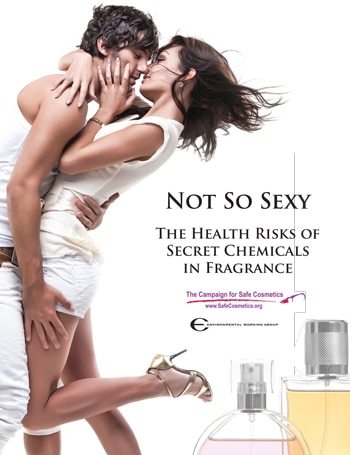EWG Report on Fragrance – Not So Sexy!

The EWG just released a report on Fragrances. Below is a part of the report and links to read the entire report.
What is important to understand is that these same secret ingredients are used in personal care and household products. That familiar brand fragrance of Tide, Dreft and dryer sheets come from fragrance developed in the same process as the cologne’s and perfumes listed in the EWG Report.
This report is not startling to us, but it will be to you. It is clear and concise as well as very easy to understand. Simply if it has a long lasting smell, it is a good chance that your products have some of these secret ingredients that are talked about in the report.
This morning our chief scientist, Bob Root, was a featured speaker on the industry call hosted by the Product Stewardship Institute.
Here is the Link to the EWG Not So Sexy fragrance report
Here is a link to the Not So Sexy Fragreance Report in PDF file format
EWG Report Excerp
A rose may be a rose. But that rose-like fragrance in your perfume may be something else entirely, concocted from any number of the fragrance industry’s 3,100 stock chemical ingredients, the blend of which is almost always kept hidden from the consumer.
Makers of popular perfumes, colognes and body sprays market their scents with terms like “floral,” “exotic” or “musky,” but they don’t disclose that many scents are actually a complex cocktail of natural essences and synthetic chemicals – often petrochemicals. Laboratory tests commissioned by the Campaign for Safe Cosmetics and analyzed by Environmental Working Group revealed 38 secret chemicals in 17 name brand fragrance products, topped by American Eagle Seventy Seven with 24, Chanel Coco with 18, and Britney Spears Curious and Giorgio Armani Acqua Di Gio with 17.
The average fragrance product tested contained 14 secret chemicals not listed on the label. Among them are chemicals associated with hormone disruption and allergic reactions, and many substances that have not been assessed for safety in personal care products.
Also in the ranks of undisclosed ingredients are chemicals with troubling hazardous properties or with a propensity to accumulate in human tissues. These include diethyl phthalate, a chemical found in 97 percent of Americans (Silva 2004) and linked to sperm damage in human epidemiological studies (Swan 2008), and musk ketone, a synthetic fragrance ingredient that concentrates in human fat tissue and breast milk (Hutter 2009; Reiner 2007).